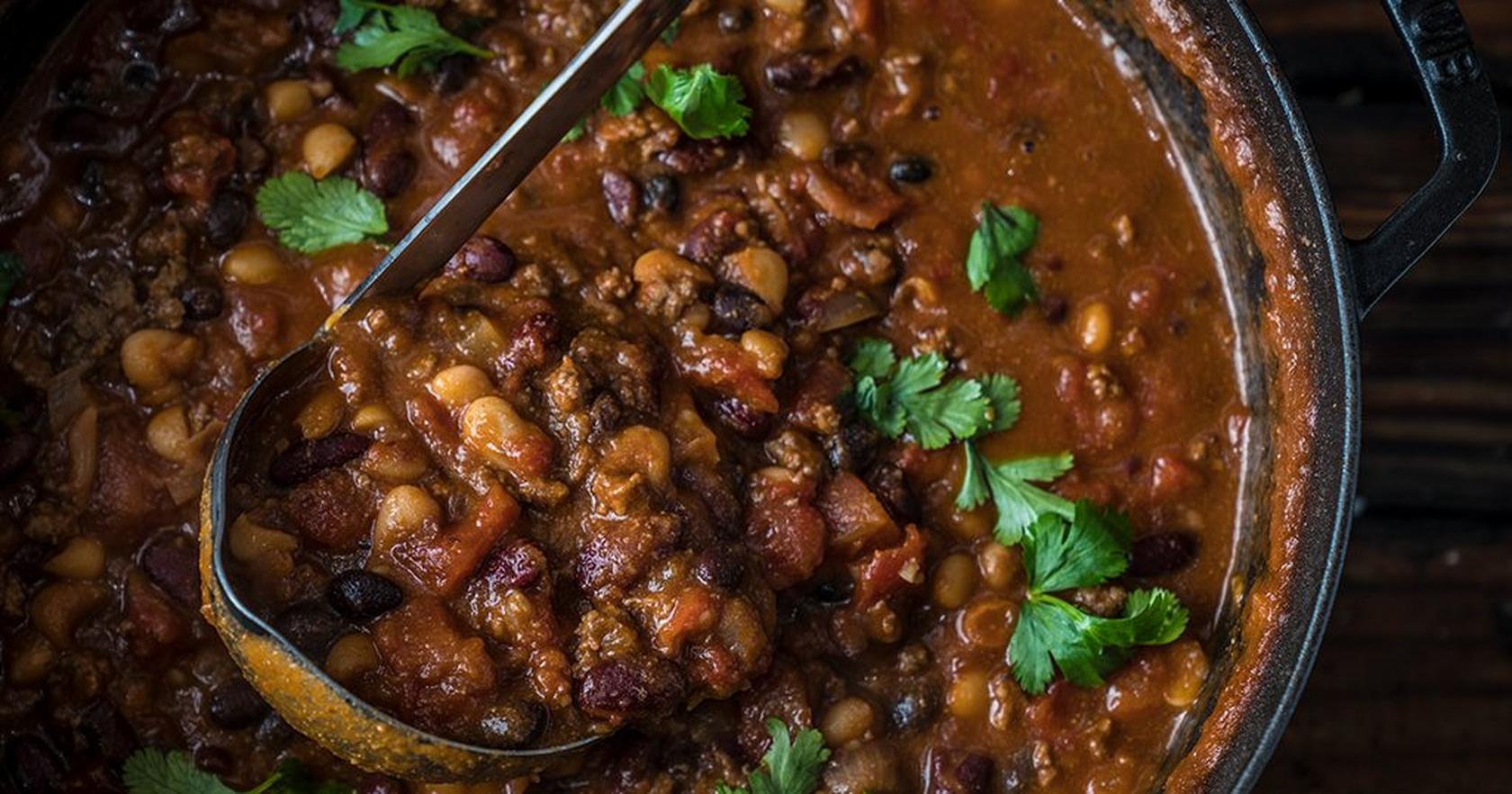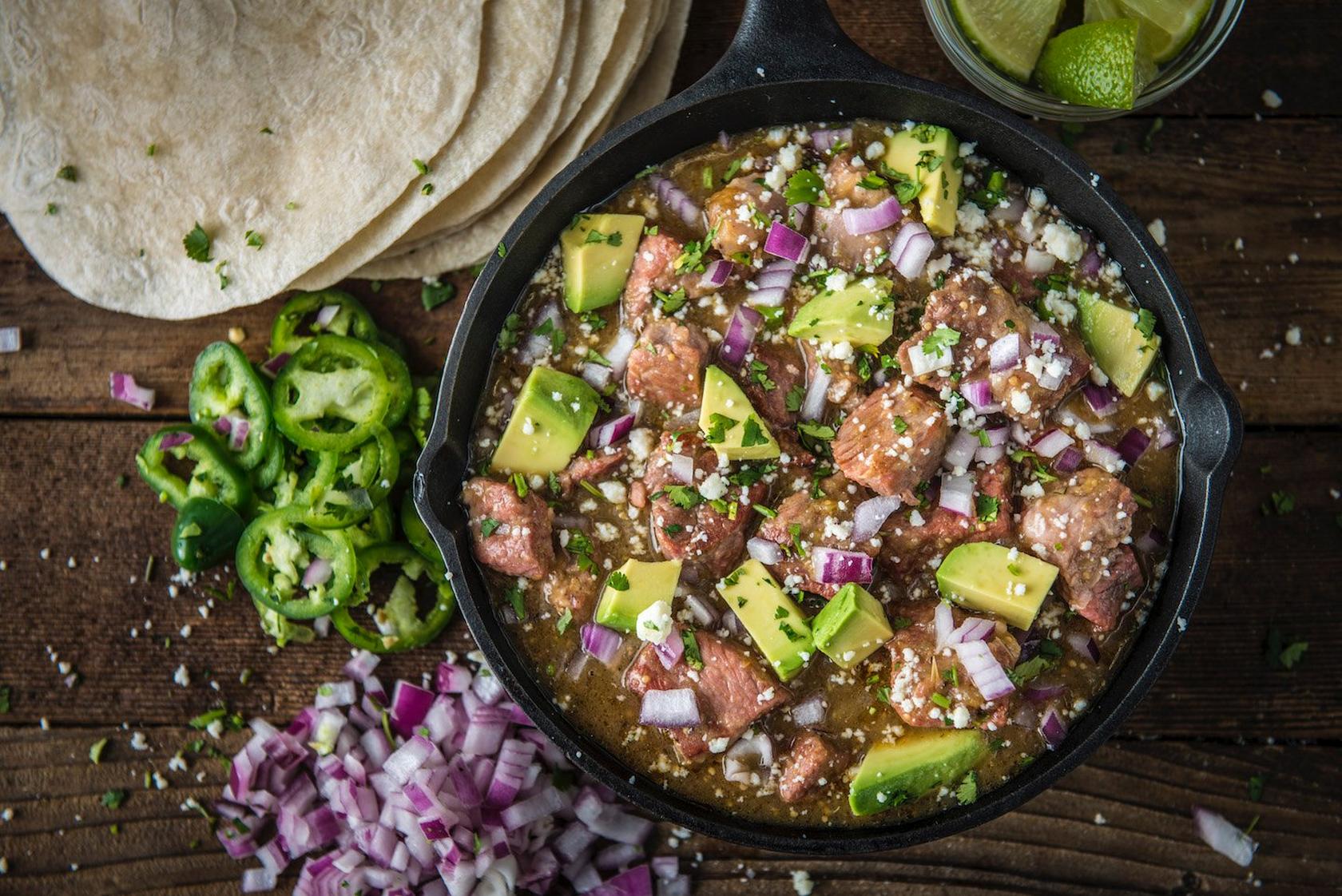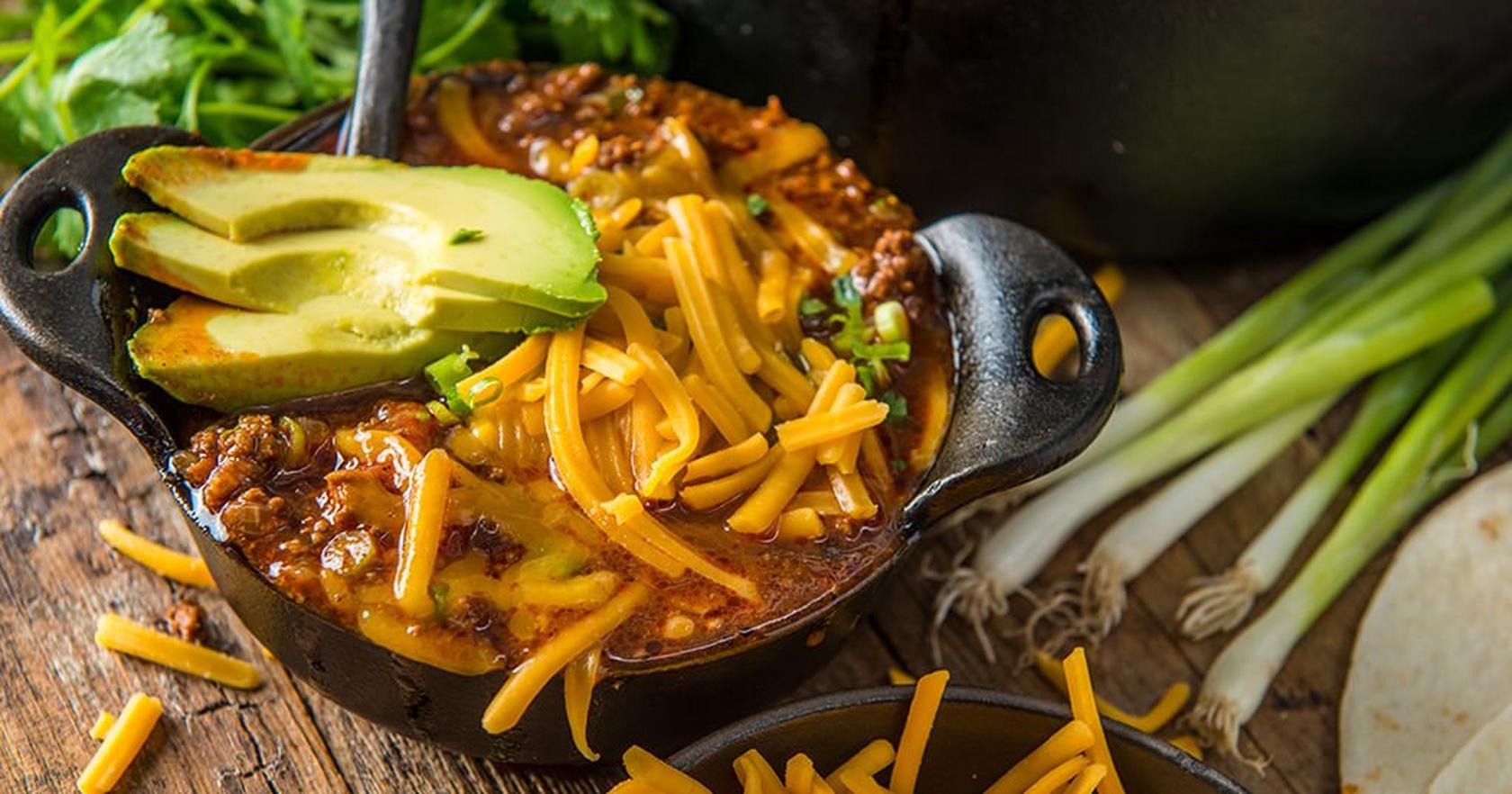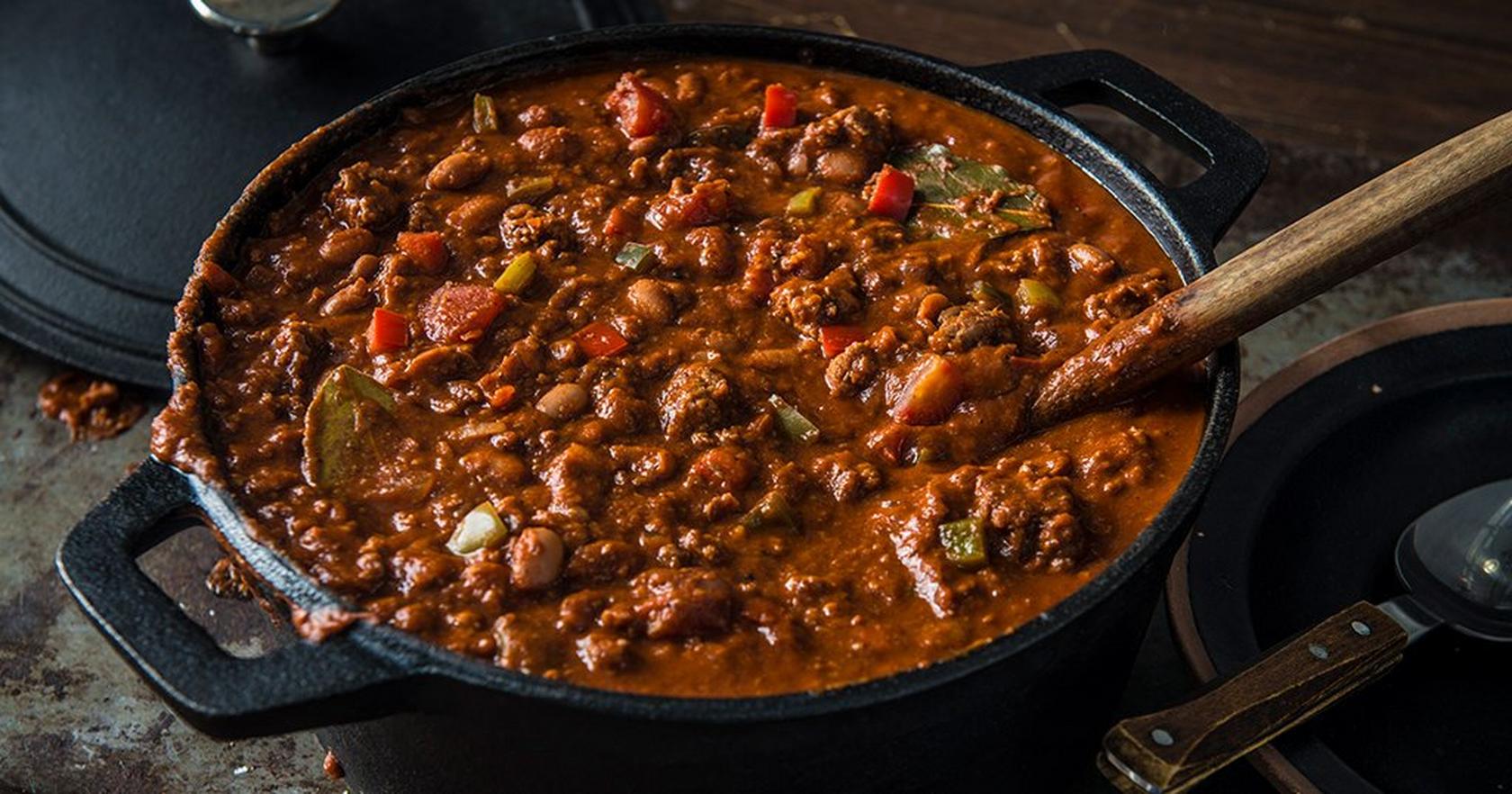The Great Debate: Does Chili Have Beans?
Jump To Recipe
In the battle of chili purists vs bean enthusiasts, one question lingers: does chili have beans? While there is no straightforward answer, Traeger’s experts are weighing in and diving into the history and flavors that fuel this debate. From hearty meat-focused recipes to bold bean-loaded variations, it’s all about crafting a dish that delivers warmth and satisfaction around the grill.
A History of Chili
Chili's origins are deeply woven into American culture, drawing rich influences from a variety of culinary traditions, with a special emphasis on Latin American flavors and heritage. This hearty dish has evolved over the years, becoming a staple that fuels camaraderie and competition at cook-offs and backyard gatherings alike. It’s also started a long and hard debate about whether beans should be added to chili or not.
Before you start taking sides, it’s important to understand some history of this family-favorite dish:
Chili’s Origins

Chili’s story starts south of the border, where the bold flavors of chilies and meat have long been part of Mexican cooking. But when Texas cowboys and settlers in the 1800s got ahold of it, they turned it into the hearty, meaty dish we know today. They kept it simple—beef, chili peppers, and a fire, perfect for feeding hungry folks on the trail. Texans made it their own, adding that Lone Star swagger, and before long, chili became a legend in its own right. Texan native and Pitmaster, Matt Pittman, is pro no beans:
“Chili was born in Texas. Traditional Texas Red Chili does not have beans in it. You can put beans in your soup if you want, but you probably ought to do that outside of the great state of Texas. – Pitmaster, Matt Pittman”
It was quickly popularized by the San Antonio Chili Queens in the late 1800’s to mid 1900s where the Queens, started by the original queens, Sadie and Matha, sold bowls of chili con carne in the public squares. Before long, it was being served around the country including at the 1893 World’s Fair in Chicago and the San Antonio Chili Stand in 1904.
With its popularity growing, the introduction of canned chili became widely available, spreading even further across the U.S.
Regional Variations
As chili spread across the country, different regions adapted it to local tastes. Cincinnati for example developed its own chili recipe served over spaghetti, while some areas of the country ditched the beef in favor of chicken creating a white chicken chili.
But one thing stoked the flames more than the spice—the beans debate. Texans are die-hard: real chili doesn’t mess with beans. Other spots? They threw ‘em in without hesitation. And just like that, the battle of beans vs. no beans became a chili showdown as fierce as the dish itself.
Chili without Beans

If you’re having chili without beans, it’s most likely been cooked by a Texan where chili with beans is akin to treason. That’s because real chili comes from chili con carne – which means “chili with meat.” Forget the fillers. It was built for cowboys and hard workers, and Texans stick to tradition.
Pitmaster and Texan-Native, Clarence Joseph said it best when asked about beans vs. no beans in chili:
“I’ll eat your chili either way, but if I’m making it, there’s CHUNKED meat and ZERO beans! - Pitmaster, Clarence Joseph”
Bean haters will also tell you that adding beans waters down the authenticity and takes the spotlight off what matters most—meat and chili. They’ll argue that a beanless chili lets those bold spices and the deep, smoky flavors of slow-cooked beef or pork steal the show, without any competition from mushy beans. And let’s be real, no beans mean a thicker, meatier bite every time.
“No beans in my go-to recipe just like the good lord intended. But my wife Jaclyn loves beans in hers, so I’ve been known to make compromises. - Pitmaster, Jason Wilson”
Check out some of our favorite beanless chili recipes below to make on the pellet grill:
You can also take out the beans in any of our chili recipes to give them more of an authentic flair.
Chili with Beans

While Texas held the line on beanless chili, states like Oklahoma, New Mexico, and others were busy shaking things up by adding beans to the pot. Not only did beans add another layer of flavor, but they were cheap, filling, and could make a pot of chili stretch even further—a huge benefit for feeding large families or crowds on a budget. For these regions, it wasn’t just about tradition; it was about practicality.
“I prefer no beans. It is like filler. I use ground meat and brisket in mine. My wife Jen's family didn't have much money and used beans to stretch it out, so sometimes it’s a luxury question. – Dough Scheilding”
Pro-bean advocates argue that beans bring a hearty texture and extra richness that balances the heat of the chilies. The starchiness of the beans helps soak up all the bold flavors, creating a thicker, heartier stew. Plus, with so many varieties of beans to choose from—kidney, pinto, black—you can mix things up while still keeping the dish comforting and satisfying.
“You gonna get me run out of the state, but I’m team beans. I’ve been known to use 4 kinds in my chili! – Josh Hunt”
Since then, chili with beans has taken over as the primary way people enjoy a bowl of chili. If you’re competing in the International Chili Society, many of the chili dishes you can compete with have beans as a requirement.
At Traeger, we have a few chili with beans recipes you can try out:
Best Chili Sides

Whether you’re team beans or no beans, one thing’s for sure—an epic bowl of chili deserves equally epic sides.
-
Cornbread: One of the nation’s favorite chili sides is cornbread, thanks to its perfect balance of sweet and savory flavors, plus its ability to soak up all that chili goodness. Traeger’s cornbread with honey butter recipe is perfect to pair with a beans or no beans pot of chili.
-
Texan Sides: In Texas, several sides complement chili well. Plain white rice and Mexican rice are commonly served, along with tortillas, and pickled jalapeños (for a wood-fired twist on this popular topping, try making our smoked cowboy candy).
-
Funeral Potatoes: Funeral potatoes have gained popularity, especially in Utah, and are a delicious side to pair with chili. Because of its creamy texture and rich flavor, it complements the flavors of chili, creating a hearty meal.
-
Dinner Rolls: There’s nothing quite as simple and satisfying as warm dinner rolls, especially when paired with a rich, hearty chili for dipping.
-
Fritos, Crackers & Chips: Fritos, tortilla chips, and Traeger smoked crackers bring the perfect crunch to your chili game, elevating every spoonful with a bold, smoky flavor. These toppings not only add an irresistible texture but also soak up that hearty goodness, making your chili experience truly unforgettable.
-
Cinnamon Rolls: Although cinnamon rolls are not the most common chili side, areas of the Midwest like Ohio and Iowa have been known to pair this unconventional side with a bowl of chili. Dipping is not required but strongly encouraged!
-
Hotdogs: Nothing pairs with a bowl of hearty chili quite like a perfectly grilled hot dog—because when you’ve got chili, why not go all in with a chili dog? The smoky flavor of a Traeger-grilled dog is the ultimate sidekick, ready to be loaded up with that thick, savory goodness.
So, what do you think? Does chili have beans? Try making both kinds on the Traeger and let us know where you stand.
Smoked Over the Top Chili
by Mandy Tanner
55 Reviews
Prep Time
10 Min
Cook Time
4 Hr
Serves
8
Pellets
Cherry
Here’s the Traeger take on a popular smoked over the top chili internet recipe. Ground meat is cooked on a rack positioned above a pot of bean chili for optimum smoke penetration. As the meat cooks, it drips fat and flavor into the pot below. The wood-fired meat then gets crumbled into the smoked chili recipe. It’s truly a fun way to make an old favorite. Note that our Traeger Spicy Fajita rub is, well, spicy. If yours is not, add the optional chili powder and, if you want more heat, some cayenne pepper, too.
Ingredients
Chili
| canola or other neutral flavored oil | |
| 1 Medium | yellow onion, diced |
| 1 Medium | red or green bell pepper, diced |
| 2 Tablespoon | Traeger Spicy Fajita Rub |
| 3 | 16-oz cans beans, preferably a mix such as pinto, great northern, and kidney, drained and rinsed |
| 1 | 28-oz can diced tomatoes and green chilies, drained |
| 4 Cup | beef broth |
Meat
| 1 Pound | ground beef, preferably 80% lean |
| 1 Pound | ground pork |
| 2 Tablespoon | Traeger Spicy Fajita Rub |
| 1 1/2 Teaspoon | chili powder (optional) |
Serving
| 4 | scallions, thinly sliced |
| 2 Cup | grated cheddar cheese |
| 1 Cup | sour cream |
| Cornbread (optional) |
1
Heat 1 tablespoon of the oil in a large enameled Dutch oven over medium-high heat. Add the onion and pepper and cook, stirring occasionally, until softened, 3 to 5 minutes. Season the onions and peppers with 2 tablespoons of Traeger Spicy Fajita Rub and stir to combine. Add the beans, the tomatoes and chilies, and the beef broth, bring to a simmer.
2
Meanwhile, if your grill allows, position the upper rack high enough to fit a Dutch oven below it on which you will cook the beef for the chili right over the pot. (If not, you can set a wire rack on top of the pot.) If necessary, scrape the upper grate clean. Preheat the Traeger with the lid closed to 225°F; this will take about 15 minutes. If available, use Super Smoke.
3
In a bowl or on a work surface, mix the ground beef and ground pork with 2 tablespoons Traeger Fajita Rub and the chili powder, if using. Form into a large ball and coat lightly all over with about 1 tablespoon oil to prevent the meat from sticking to the grates.
4
Transfer the chili to the bottom grate and place the ball of meat on the rack above the pot, positioning it so that any drippings will fall into the pot. Close the lid and smoke for 90 minutes.
5
Increase the Traeger temperature to 350°F and continue cooking until the meat reaches an internal temperature of 160°F, about 2 hours.
6
Transfer the meat to a rimmed baking sheet. Carefully raise or remove the upper rack to allow better access to the pot. If you have heatproof gloves, hold the meat over the pot and break it up into smaller pieces into the pot along with any juices. (If you don’t have gloves, break up the meat on the baking sheet with a wooden spoon or similar and transfer it and any juice to the pot.) Close the lid and let the chili cook for 30 minutes to allow the flavors to come together.
7
Serve the chili topped with scallion, cheese, sour cream, and cornbread, as desired. Enjoy!